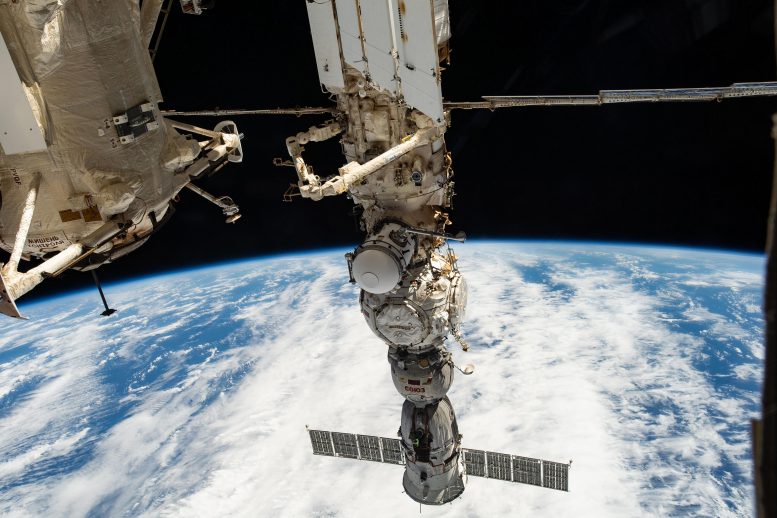
Four main components on the Roscosmos segment of the International Space Station are pictured as the orbital outpost soared 265 miles above a cloudy Pacific Ocean. From top to bottom, are the Nauka multipurpose laboratory module, the European robotic arm attached to Nauka, the Prichal docking module, and the Soyuz MS-23 crew ship. Credit: NASA
The Expedition 69 crew aboard the International Space Station (ISS) focused its main research activities on biotechnology on Wednesday. The orbital residents also continued the ongoing maintenance of lab hardware.
Research on the Space Station
Researchers on the ground use the facilities aboard the space station to understand how living in weightlessness affects the human body. Some of the experiments operate remotely or autonomously, for others the astronauts set up and run the experiments, or even act as subjects as NASA and its international partners learn how to sustain crews on future missions to the Moon, Mars, and beyond.
DNA Analysis and BioFabrication Facility Maintenance
NASA Flight Engineer Jasmin Moghbeli started her day conducting DNA research by analyzing microbe samples collected from the orbital outpost’s potable water dispenser. She used a small commercial DNA sequencing device to identify the samples for the BioMole technology demonstration. BioMole may improve environmental monitoring systems on the station and future spacecraft traveling farther away from Earth.
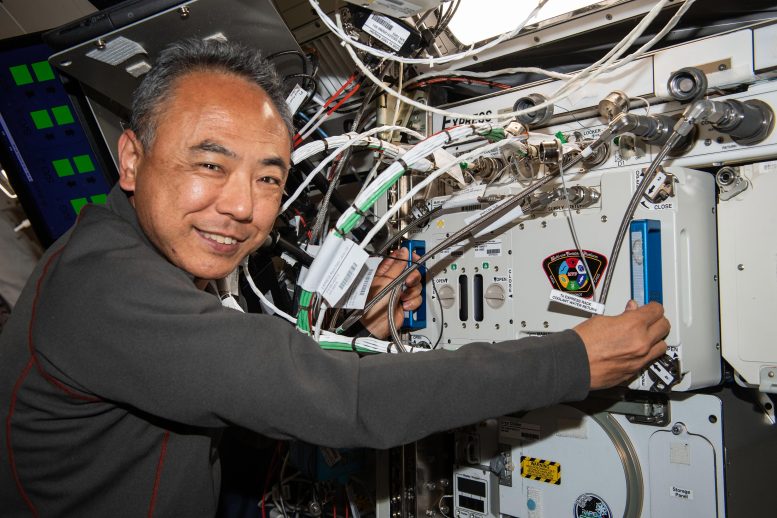
Expedition 69 Flight Engineer and JAXA (Japan Aerospace Exploration Agency) astronaut Satoshi Furukawa removes experiment hardware from inside the Multi-use Variable-g Platform, a biology research device that can generate artificial gravity inside the International Space Station’s Kibo laboratory module. Credit: NASA
Moghbeli then assisted JAXA (Japan Aerospace Exploration Agency) astronaut Satoshi Furukawa as he replaced components on the BioFabrication Facility (BFF). The 3D biological printer is testing the printing of organ-like tissues in microgravity with an eye to manufacturing whole human organs in space in the future.
Human Research and Cold Atom Lab Experiments
Flight Engineer Andreas Mogensen of ESA (European Space Agency) continued his human research duties that he began on Tuesday. The two-time station visitor serviced blood samples that had been placed overnight in the Kubik research incubator and then stowed the specimens in a science freezer for later analysis. Mogensen is helping doctors learn how microgravity affects cellular immune functions and to monitor the human immune system in space.
NASA Flight Engineer Frank Rubio continued his space physics activities for a second day as he replaced experiment gear inside the Cold Atom Lab. The research device chills atoms to near absolute zero creating almost no motion allowing scientists to study fundamental behaviors and quantum characteristics.
Maintenance and Training Activities by the Cosmonauts
The station’s three cosmonauts turned their attention on Wednesday to the upkeep of hardware in the Roscosmos segment of the orbital lab. Commander Sergey Prokopyev and Flight Engineer Dmitri Petelin spent the day replacing pumps and installing batteries on an Orlan spacesuit. Flight Engineer Konstantin Borisov videotaped himself becoming familiar with and exercising on the advanced resistive exercise device before checking out a laptop computer in the Nauka science module.


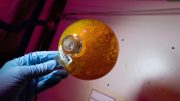
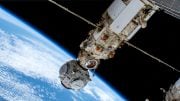


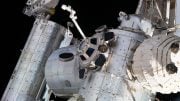
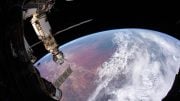
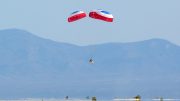
Be the first to comment on "Biotech Research on Station: Exploring DNA and Organ Printing in Space"